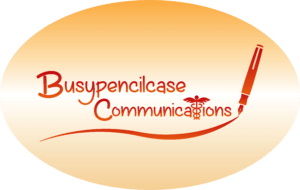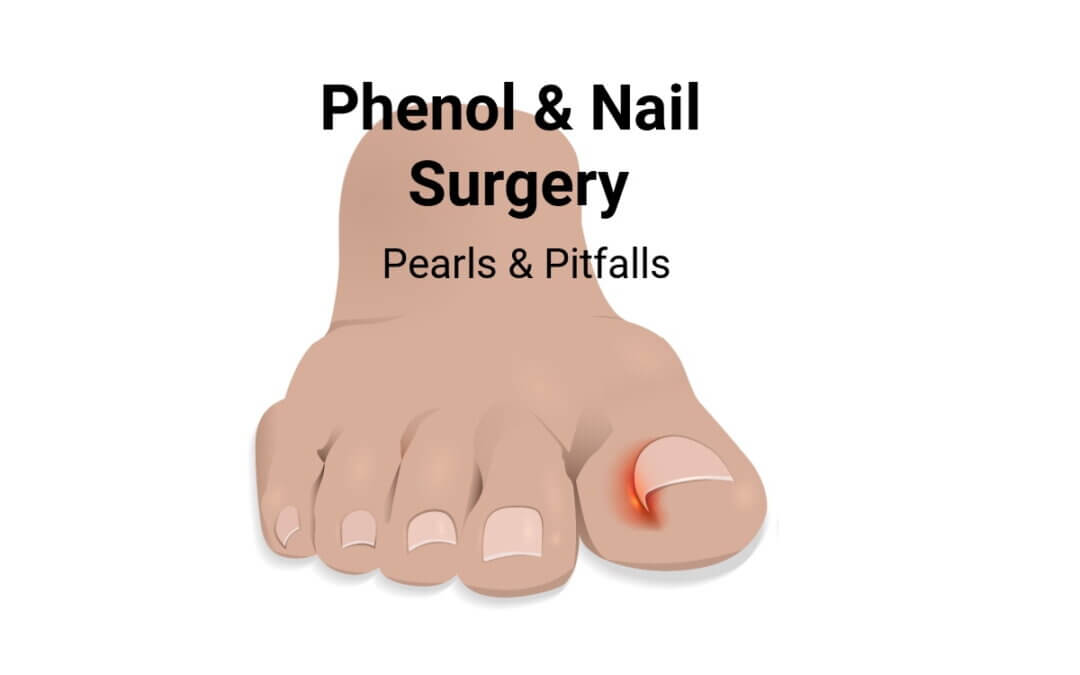Pearls, Tips and Reflection
Although first written in 2021, many of the comments still are valid. Originally picked from a diversity of questions on a podiatry Facebook page, the subject relates to the all too common query about ingrowing toenails and their failure to respond to treatment. There can be no more excellent reflection than reading answers from professional podiatrists offering a wide range of experience. This article is based around nasty-looking toes that won’t seem to heal. Should we treat diabetics in the same way as non-diabetic patients? Plenty of podiatrists use phenol, but hopefully, it is based on healing assessment and DM stability.
Recalcitrant onychocryptoses
There are three ways to deal with a toenail that causes characteristic inflammation: the cherry red covering of hypergranulation, pain, suppuration and offensive odour. The questions we must ask are—To treat conservatively, apply a chemical to destroy the growth cells called the matrix or remove a soft section of the toe. The diversity of the query comes from the point when a clinician is unsure what to do for the best. Three scenarios provide a composite view and options:- patients present as follows.
- With known medical problems and diabetes.
- Reoccurring regrowth after several attempts.
- After having been treated for regrowth with antibiotics and nail surgery, the toenail continues to look nasty.
Case 1 – Medical Risk
In case (1), there is a dilemma. The clinician wants to use phenol but is unsure if it could put the patient at risk. The advice was wide and varied from a Facebook audience. The majority believed that if the circulation is fine and the blood analysis for diabetes is stable, phenol should be fine. The corollary is that the patient should be informed of the risks, and it is implied that this will safeguard a decision. Here are three counter corollaries.
All tissue is different, and because healing is the concern, phenol can impede healing. This recalcitrance to recover, say, within a 10-21-day period, can be extended for months. There is a straightforward answer for any person wondering whether to proceed. This is taken from a post (Berms 2008) from a different podiatry UK site.
Where was the evidence?
The question sought suggested that phenol could have a lethal effect—months of despair, dressings, depression, loss of limb and maybe death. The response from Podiatry Arena suggests that risks are low. There has been a presumption that one can use a specific ‘duration time’ for every patient. This is taught in undergraduate school and is broadly correct, but for one fact. All tissue is made up of a specific DNA recipe, and therefore, allergies, sensitivities and reactions to what is, after all, a caustic burn can arise. If there is an unknown, one should remove that risk. You have to deal with pain and infection and healing. Remove the section or whole nail and let it reoccur, but monitor the healing. Remove the risk from unknown phenol reactions.
My colleague and I ran a surgery programme, and we took this same view. If in doubt, do less. Sadly, on one occasion, we noted a case of a diabetic (that we had not operated on) who went on to have a leg amputation following a phenolisation. Without question, this was the problem created by phenol saturation. That was nearly 30 years ago. I have seen delayed healing, burns and skin damage due to accidental phenol application elsewhere. The literature is not particularly good at recording evidence, and this is where case history, a bit like case law, comes in. Podiatry Today published an article in 2020 (accessed 25/1/25) of interest but does not open up the debate despite being recent. Many citations are old, and the newest was in 2015. Turning to the College of Podiatry database, PASCOM data does not sustain sequellae in large numbers. We conclude that regrowth, infection and other such problems are low. In other words, we are taking it as read that this is the case when, in fact, much underreporting probably exists.
In a 5-year data capture, n= 61 nail phenolisation cases from ALL groups had a regrowth of 2.1%. However, in the smaller number of 26 cases who had diabetes alone, 10.3% had a recorded infection, and 5.1% had regrowth with phenol. Source PASCOM accessed 19/01/21
Case 2 – Incorrect Selection
Where phenol surgery has failed, it is easy to suggest that the clinician is at fault. There are reasons that phenol can fail. There is a case that some patients do not respond to this form of management. Two attempts would seem reasonable before taking on the alternative, such as a nail matricectomy by resection and suture. Never be afraid to say I cannot, don’t know. The basis of Hippocrates’ Oath can be trimmed down to two associated clauses:
I swear to fulfil, to the best of my ability and judgment, this covenant: …I will apply all measures [that] are required for the benefit of the sick, avoiding the twin traps of overtreatment and therapeutic nihilism. …I will not be ashamed to say, “I know not,” nor will I fail to call in my colleagues when another person’s skills are needed for a patient’s recovery.
Case 3 – Poor Healing
The case of a patient having poor healing and infection was more enlightening in the most recent spin on this topic. The responses came back as most likely S.Aureus, which is true, but there is a case for focal infection that can be overlooked. Secondly and more bizarre is the self-harm side. If antibiotics fail, they do so because of the wrong dose and the wrong antibiotic for the organism is present. In this case scenario, the author found that a patient had failed to respond. Culture is mandatory in these circumstances. In one of my cases 12 years ago, Flucloxacillin PO 500mg qds was prescribed but failed. Prevotalla melanogenic was identified as arising from a dental gum infection and treated with metronidazole when it was then cleared. This was put down to focal infection.
The second case of non-healing occurred when the young female patient (adolescent) had a case of onychotillomania, i.e picked at her nail tissue obsessively. Never underestimate neuroses surrounding conditions that do not seem to do well.
Summary
Evidence is essential and always will be. PASCOM data is far from ideal and needs to be collected prospectively with tighter controls. There, again, PASCOM supports clinicians in reflecting on their practice as was always intended. Modha, R.(2019) provided helpful insight into the system for nail surgery capture. We take home that healing problems are not down to the clinician alone. Problems may be associated with different tissue types. No study to date has provided a conclusive distinction between tissue types, But the female-male gender gap in health is more relevant now than ever. Likewise, for the sake of avoiding risk, stay safe and do not use phenol if you are uncertain. Despite the apparent low risk, it may appear low, but we cannot rely on small data sets without robust scientific techniques. Poor healing may be down to the patient or a focal infection.
More about toe surgery
Read Alison’s case about pain after injections.
Thanks for reading this Facebook series – “Pearls and Pitfalls of Phenolic Nail Surgery” by David R. Tollafield.
Published by Busypencilcase Communications & Publications. Est. 2015

Originally published 25 February 2021. Updated and Modified January 2025.


I’m a patient, not a Podiatrist. The following has been my experience with Ingrown Toenails in 2022. I am curious to know why this happened. Needless to say, I’ll be changing Podiatrist in 2023.
I had an ingrown toenail on my R Big Toe Lateral, in February 2022. Toe was sufficiently numbed. Podiatrist used an “acid”, I assumed was phenol. He trimmed the Lateral side of the nail & dug into the bed of the nail, using the acid. After about 3 mos of healing, nail had grown enough, out of the bed, & I noticed a hole was emerging instead of nail. Podiatrist seemed to be in denial. He thought that part of the nail may grow back. After 5 mos, nail was not growing from Lateral bed, so I was going to lose about 1/3 of my R Big Toenail instead of just a thin slice of the nail on the Lateral side.
In July 2022, my R Big Toe Medial side was also ingrown. So thinking that the Lateral side which wasn’t working out, was just a fluke, I again had the same procedure to the Medial side of my R Big Toe. Same Podiatrist. Unfortunately, the same result. As of November 2022, I have lost my whole toenail on my R Big Toe.
Podiatrist doesn’t know what could have happened. He did finally admit that it was a significant event. I asked him if Podiatrist(s) in their Practice, had any way of reporting on a procedure(s) that result in some harm or unexpected result to the patient. He said No, just making a Note in the patient’s Chart.
In 2020, I had previously had 2 of my other toes which were ingrown with the same procedure, different Podiatrist (same Practice); I still have those toenails, no problem.
Dear Pamela, thank you for sharing this information. Yes the acid was almost certainly phenol (carboxylic acid) and is the standard approach for ingrown nails. As an observation, podiatrist (1) has a different technique to podiatrist (2). It is not uncommon to find different results between podiatrists but so much depends on experience, training and mentorship, length of practice and whether the podiatrist (as in any healthcare professional) takes time to audit their results. Phenol is unpredictable and there have been a number of changes, recommended by The Royal College of Podiatry (UK), over the years as to what system to use. The most important concern for anyone performing nail surgery is to assess the risks and inform patients about healing delays. In all types of healthcare, patients are right to make a change to a different practitioner. However, one can never judge based on a result that might be sub-optimal for the patient while the practitioner has followed all the correct guides. Nonetheless, you post is valuable and a learning point for all people who undergo or undertake surgery.
I have lynphodoema and rheumatoid arthritis. I am considering having a partial nail removed on my left toenail which is involuted but am worried about having Phelan. Very grateful for any advice Thank you
Dear Pauline, I am unsure what phelan is but if you mean phenol, then there are a couple of things you need to consider. Rheumatoid arthritis in itself is not the problem but the medicines used to manage this may reduce your healing capacity. Phenol is a chemical caustic and alone caused damage and can inhibit healing. Modern delivery of this substance however is more controlled than years ago but regrowth of the nail does arise if the chemical is not strong enough. All tissue (the skin in particular) is affected by a wide range of criteria, how moist, how dry, how thin, health of the patient, circulation and so forth. Now lymphodaema is another criteria. Personally I have never operated on lymphoedema with phenol as I am a cautious podiatrist and preferred to consider a different approach. I would suggest discussing this with your clinician and air your concerns. Good luck, David
Hi. I had permanent toenail removal 6 1/2 weeks ago on both big toes. They used phenol on them. I still have open weeping beds and my blisters are growing up my toes and have reached the first knuckle. Lots of pain, bleeding, weeping. The past week they got worse. I was on an antibiotic the second week after the removal. I can’t ware shoes are go back to work. I didn’t know the healing was going to be this bad. Some days I can hardly walk. Why is it this bad and what can I do to stop blisters?
Dear Samantha, thank you for writing on consultingfootpain. From the information you have provided it would appear that he has had a reaction. Almost certainly to the phenol. If antibiotics are not allowing this to settle it is doubtful that this is infection. The surgeon would probably have taken a swab to rule out infection in any case. It is unusual, however, for weeping and blistering to extend to the length of time that you have reported. I can only advise that these reactions are extremely rare. The only advice I think I can offer without a lot more information is that you seek your doctor’s advice as far as treating Foot as if it was a burn. This will take a few more months probably to settle but eventually your foot will recover as long as all other factors, which might slow healing down, are not apparent to your physician or surgeon. If you do find any positive treatments, please do report these so that we can publish them to support other readers as this remains a popular query. Best wishes, David
For phenol flare / reaction consider early use of flamazine.
Always have some in stock because pharmacy may need to order it in.